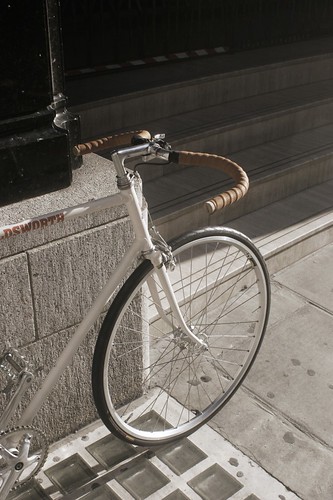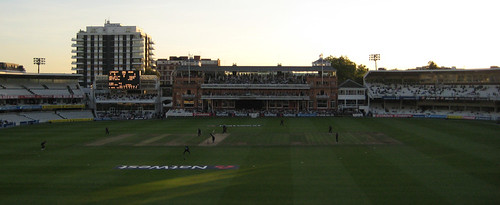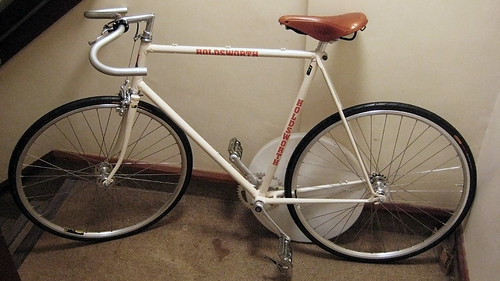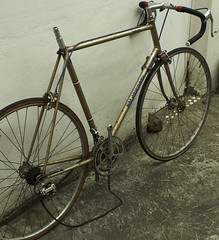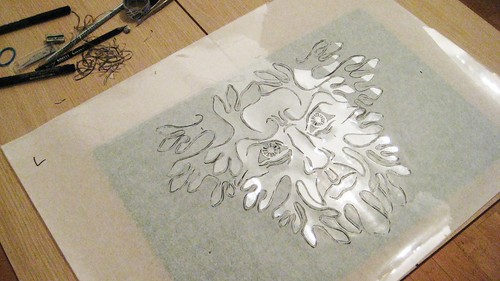It is interesting how films can evoke different emotional responses depending upon how they are viewed.


Sticking with Ridley Scott as an example, I was used to watching "
Alien" on a TV screen for years before I got a chance to see it at the cinema. When I helped run the film society at the art college I attended we discovered an anamorphic lens for the 16mm projector in the back of a cupboard and thus decided to hold a "widescreen" season in its honour. Amongst others we rented "Jaws", "Blade Runner", "Dirty Harry" and "Alien". The print for "Alien" was so old it had an 'X' certificate rather than an '18' and probably hadn't been loaned out by the BFI in a decade. After an afternoon patching up the splices on the brittle reel ends we were able to screen the film for the twenty or so students who could be bothered to come and see this classic as it was meant to be seen. I knew this film backwards, every shot, every edit and yet seeing it on a large screen made the whole experience radically different. The shots which really affected me differently on the big screen were the long tracking shots, for example those at the beginning of the film as we move through the intestines of the 'Nostromo'. On a small screen this has no impact beyond exposition but when the image is more than life-size and fills your peripheral vision the sense of place becomes palpable - one inhabits the space. The effect of having your eyes drenched in this new world is utterly transportative and you instantly become part of the narrative before you have seen an actor or heard a single line of dialogue.


I had exactly the same experience seeing
"L'Année Dernière à Marienbad" on a cinema screen at the Curzon Mayfair for the first time last year - the long shots travelling though the baroque palace serve as transportation for the soul of the audience out of their seats and into the world of the film. Any narrative where a sense of place is important, or where a location almost becomes a character in its own right, like The Nostromo or the palace at Marienbad, is best served by the scale of a cinema screen; it envelops us rather than us dominating it. Similarly films where the characters' relationships with a location are important, "Brokeback Mountain" or "Treasure of the Sierra Madre" leap to mind, rely upon placing us, for empathetic purposes, into the same environment as the protagonists.
These shots are made for a cinema, not for television. Watching them on a smaller screen simply does not have the same visceral impact. It's like looking at a Mark Rothko painting reproduced in a book: it gives you an idea of what the piece is about without any of the actual substance. This is not to diminish TV, merely to point out that work designed for one format seldom translates intact to another. To give another hypothetical example: it would be like watching a soap opera on a cinema screen where the continual close-ups of heads and mid-shots would have you crawling for seats right at the back pretty quickly. This type of talking heads visual media is designed for a TV screen and that is where it works best.
So I understand what Scott says, and I largely agree. If we make films designed to be viewed on a small TV screen we will lose something that only a big screen can give us. For me, seeing Grawp in "Harry Potter and the Order of the Phoenix" on the IMAX screen where he truly appeared gigantic, gave me a greater sense of who he was as a character and what he was capable of than all the hours I spent in front of a monitor working on those very same shots.

Similarly the close up of the full size mechanical Kong's face from the 1933 version, which appears comic because of its limited movement on television, (and has been duly parodied shot for shot in the Simpsons' "Treehouse of Horror III" for that very reason) looks truly menacing when viewed on a full size cinema screen.
The ever increasing use of iPods and 'phones to watch video is not a bad thing per se. What worries me is that cinema is becoming less like cinema, it is seldom a transportative experience anymore and we seem to be headed to a world where homogeneous visual entertainment, which works equally badly via every method of delivery, becomes the norm. Indeed, if we are not careful we could lose those special qualities that each medium has to move us.
Cinema suffers a worse fate than the others though for an additional reason. Whilst modern televisions far exceed previous generations in terms of quality, going into a modern cinema no longer feels like entering a magical land of strange promise and wonder. I am not being nostalgic here. Everytime I go to the Curzon Mayfair I am reminded what "going to the cinema" really means. The architecture, the design of the seats, the interior design of the auditorium all make the experience special. Modern cinemas are nearly all tin sheds on industrial estates on the outskirts of towns and inside they look like cheaply designed and built service areas found on motorways. Even supposedly prestige venues like The Odeon Leicester Square feel cheap and tacky though the ticket prices certainly aren't. I cannot blame people for abandoning the cinema, the films are designed for TV and the theatres are tawdry. Having a projector and surround sound at home becomes increasingly affordable and why would you choose anything but that? It is a shame, and I am glad that I have been lucky enough to experience a real cinema as it is an increasingly rare phenomenon. Anyone who says seeing a properly cinematic film on TV is no different to seeing it in a theatre has clearly never watched "
2001 A Space Odyssey" on 70mm in a 1950s purpose built modernist cinema. That is an experience I will always treasure whatever happens to the artform over the coming years.
Update: Once again I find myself wandering down paths previously trodden by Kristin Thompson and David Bordwell.
Here, Bordwell discusses watching films on his iPod.
For the most part, I don’t watch fiction films on my iPod. I watch documentaries... I don’t watch TV at home, but I catch up with shows like The Shield and The Wire via my iPod. I watch some YouTube clips, especially the Two Chinese Students (aka Back Dorm Boys), which always give me a lift.
But I confess I’ve also put on films that work, for me, like favorite music. These are films I know well and love to look at in idle moments.
I wonder whether the desire to watch documentaries and TV is because of their talking head formatting which works well on a tiny screen? Most other iPod owners I know (myself included) also have have what I refer to as "comfort food movies" on their iPods: films we know backwards already where the tiny iPod image is really just an aide memoire to the version we carry in our heads. Here the iPod is not really subverting cinema as we aren't using the device as a replacement for cinema, it is merely a crib sheet for our memories to relive those precious moments in the dark.





